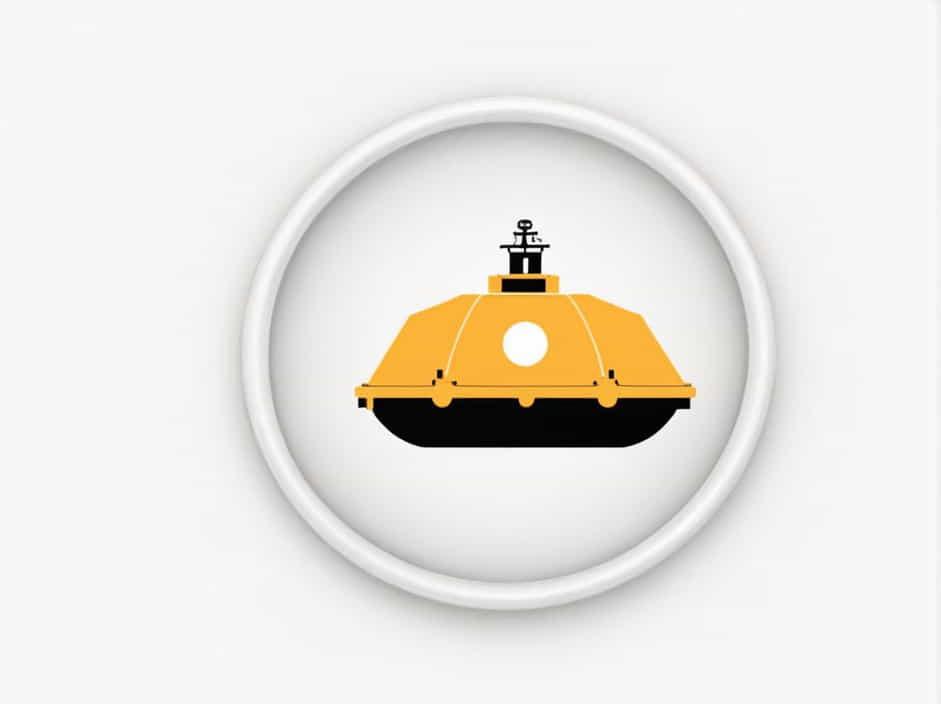A rigid liferaft is an essential piece of marine survival equipment designed to provide safety and shelter for crew members and passengers in an emergency at sea. Unlike inflatable liferafts, a rigid liferaft maintains its shape without needing inflation, making it more durable and reliable in extreme conditions.
This topic will explore what a rigid liferaft is, what it is equipped with, and why it is crucial for maritime safety.
What Is a Rigid Liferaft?
A rigid liferaft is a type of lifesaving appliance (LSA) used on ships, offshore platforms, and coastal operations. Unlike inflatable liferafts, rigid liferafts are built with sturdy materials like fiberglass or reinforced plastic.
1. How Is a Rigid Liferaft Different from an Inflatable Liferaft?
- Rigid liferafts do not need to be inflated, reducing the risk of failure.
- They are heavier but more durable in rough seas.
- Typically used on passenger ships, ferries, and offshore platforms.
2. Key Features of a Rigid Liferaft
- High buoyancy and stability
- Weather-resistant construction
- Self-draining floor to prevent water accumulation
- Canopy for protection against harsh weather
On a Rigid Liferaft Which Is Equipped: Essential Components
A fully equipped rigid liferaft includes survival gear, emergency equipment, and navigational tools to ensure the safety of occupants.
1. Emergency Rations and Water
- Sealed drinking water pouches (0.5 liters per person)
- Energy-dense food rations to prevent starvation
- Fishing kit to supplement food supplies
2. First Aid and Medical Supplies
- First aid kit with bandages, antiseptics, and medication
- Seasickness tablets to prevent nausea
- Survival blanket for warmth
3. Communication and Signaling Devices
- Emergency Position Indicating Radio Beacon (EPIRB)
- Handheld VHF radio for distress communication
- Whistle and signaling mirror
- Waterproof flashlight and spare batteries
4. Safety and Navigation Equipment
- Sea anchor to stabilize the liferaft
- Paddles or oars for manual navigation
- Compass for direction
- Radar reflector to increase visibility to rescue teams
5. Firefighting and Survival Tools
- Waterproof matches and fire starter
- Multipurpose knife for cutting ropes or opening food packets
- Bailer and sponge to remove excess water
- Repair kit for minor damages
Why Is a Rigid Liferaft Important for Maritime Safety?
A rigid liferaft is critical for ensuring survival in emergency situations at sea.
1. Provides Immediate Safety
- Offers protection from the elements (rain, wind, waves).
- Keeps survivors afloat in case of shipwreck.
2. Reduces Risk of Hypothermia and Dehydration
- Insulated flooring prevents loss of body heat.
- Water and rations help sustain survivors until rescue.
3. Increases Chances of Rescue
- Equipped with signaling devices to alert rescuers.
- Bright colors make it visible from afar.
How to Maintain a Rigid Liferaft?
Proper maintenance ensures that the liferaft is always ready for use in an emergency.
1. Regular Inspections
- Check for cracks or damage in the hull.
- Ensure that safety equipment is intact and up to date.
2. Storage and Deployment Checks
- Liferafts must be stored in easily accessible locations.
- Crews should be trained on how to launch and use them.
3. Emergency Drills
- Conduct liferaft deployment exercises periodically.
- Train crew members on survival techniques and rescue procedures.
A rigid liferaft is a lifesaving necessity on ships and offshore platforms. Equipped with essential survival tools, it ensures the safety of passengers and crew during maritime emergencies. Proper maintenance and training can significantly improve the chances of survival and rescue.
Understanding what a rigid liferaft is equipped with and how to use it can make the difference between life and death at sea.
